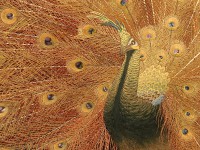Threads of Silk and Gold: Ornamental Textiles from Meiji Japan
(from 9th Nov 2012 until 27th Jan 2013)Discover exquisite embroideries, dyed silk and velvet panels, tapestries, and appliqué works

- This is a visual browsing tool that maps objects in this publication, gallery or collection trail by date of creation onto a timeline.
- The circular markers indicate where objects are on the timeline.
- The size of the markers indicates the relative number of objects at that point on the timeline.
- Hover over a marker to find out which objects are represented at that point in time.
- To expand, collapse or hide the timeline, click these symbols
 found at the top right of the timeline.
found at the top right of the timeline.
- 1850
- 1860
- 1870
- 1880
- 1890
- 1900
- 1910
- 1920
Fragility of textiles
Textiles of Meiji period Japan (1868-1912) are rarer and less well known today than the ceramics, woodblock prints and metalwork produced in Japan at that time. This is not because they were less popular than other crafts. In fact they were produced and exported in large quantities. However, textiles are extremely fragile and easily damaged.
The main cause of damage to textiles is uncontrolled light levels. When a textile is exposed to direct sunlight, colours quickly fade and fibres weaken, break and fall away. Heat can have a similar effect. Weakened textile fibres are extremely vulnerable to physical damage when handled.
Other damaging factors are pollution, insects and incorrect humidity. Pollution, commonly from smoke (tobacco or open fires), causes dirt deposits on textiles. The larvae of moths and carpet beetles feed on certain textiles causing holes and soiling. And if the humidity is too high, moulds may grow, staining and weakening the embroidery.
The embroidered, woven and dyed textiles in this exhibition are rare survivors. They have withstood the agents of decay which have destroyed a large number of comparable pieces.
Notice
Objects from past exhibitions may have now returned to our stores or a lender. Click into an individual object record to confirm whether or not an object is currently on display. Our object location data is usually updated on a monthly basis, so please contact the Jameel Study Centre if you are planning to visit the museum to see a particular Eastern Art object.
© 2013 University of Oxford - Ashmolean Museum

